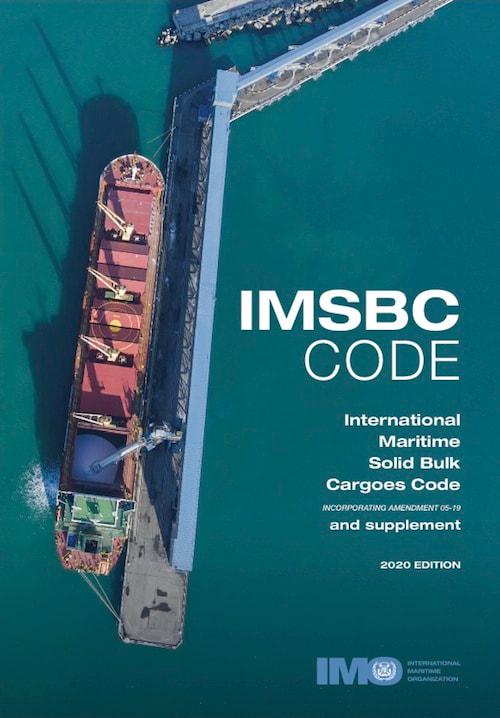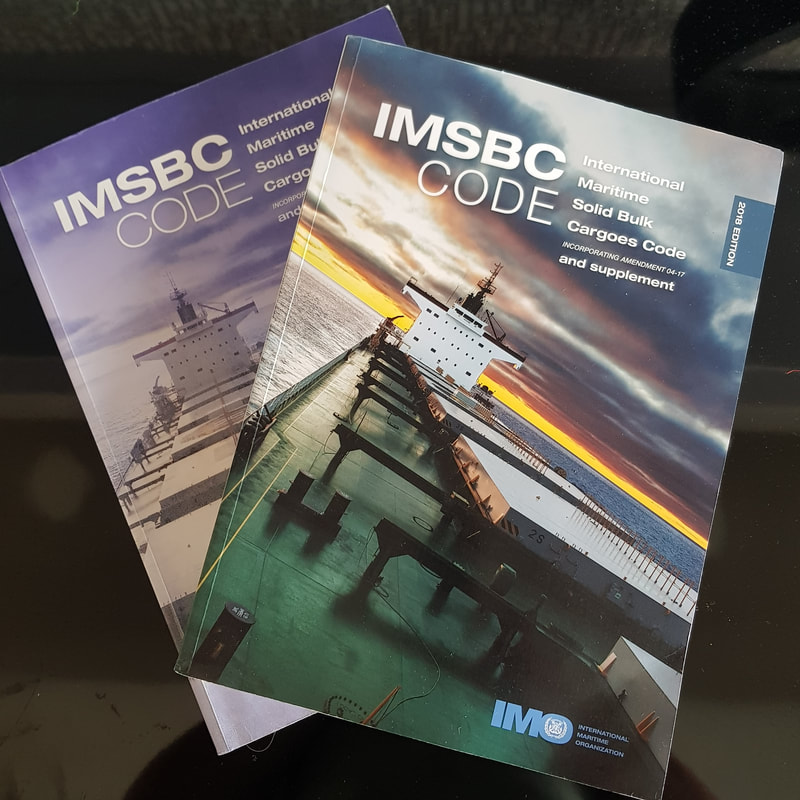|
AMSA Exemption Relating to Corrosive Properties of Solid Bulk Cargoes (Updated December 2022)
The Australian Maritime Safety Authority (AMSA) has been working with industry on issues identified with the repeatability and reliability of the modified C.1 test prescribed by section 9.2.3.7.3 of the IMSBC Code[1]. A refined Materials Hazardous only in Bulk (MHB) corrosivity (CR) test has been developed, which specifies testing of representative cargo samples at conditions representing their as-shipped properties. Amendments to be included in the 06-21 amendments to the IMSBC Code were finalised and agreed upon during CCC 5 in September 2018. These were sent to the Maritime Safety Committee (MSC) in December 2018 for that committee to issue an MSC circular. Until that circular can be formally published, AMSA has previously issued five exemptions relating to the corrosivity of solid bulk cargoes, the most recent being EX 5739 (issued 4 February 2019 and valid until 31 December 2022). Due to the global pandemic, the finalisation of the 06-21 amendments to the IMSBC Code was delayed. The Maritime Safety Committee, at its 105th session, adopted the 06-21 amendments that will come into mandatory effect on 1 December 2023 and also approved a revised circular MSC.1/Circ.1600/Rev.1 Guidance for Conducting the Refined MHB (CR) Test that reflects those amendments. AMSA has therefore issued an Exemption 6343, valid until 30 November 2023, to allow shippers to use the revised circular until the 06-21 amendments to the IMSBC Code come into mandatory effect. A shipper can use EX 6343 for any solid bulk cargo; hence it replaces all previously issued exemptions relating to the corrosivity of solid bulk cargoes (i.e. EX 5450, EX 5451, EX 5717, EX 5718 and EX 5739), regardless of the date of validity indicated on those certificates. AMSA Approval for MHB categorisation related to self-heating properties of coal (Updated December 2022) AMSA has been working with industry concerning issues identified with the repeatability and reliability of the N.4 test prescribed by section 9.2.3.3 of the IMSBC code to determine the self-heating properties of coal. While the research continues, they have issued Approval 8024, valid from 14 December 2022, which replaces the previously issued certificate of approval AP5620. This exemption permits the approval of coal, meeting certain criteria, to be MHB on the condition that extra precautions are taken. A copy of approval 8024 should be made available to Masters of vessels before loading if it is relied upon. Exemptions and approvals for the handling, transport, and categorising certain cargoes can be found here Want more information? For further information on these exemptions or approvals, or any other maritime transport compliance query please contact Davoren Environmental [email protected] [1] International Maritime Solid Bulk Cargoes Code. Incorporating Amendment 05-19 and Supplement, 2020 Edition.
0 Comments
A refined Materials Hazardous only in Bulk (MHB) corrosivity (CR) test has been developed which prescribes testing of representative samples of the cargo at conditions representing their as-shipped properties. The International Maritime Organization (IMO) formally published this interim guidance in January 2019 MSC.1/Circ.1600 Interim Guidance for Conducting the Refined MHB (CR) Corrosivity Test. AMSA have recently issued exemption EX5739 which allows shippers to use this guidance in the circular until 31 December 2022 when it is agreed and finalised in the 06-21 amendments to the IMSBC Code, considering the mandatory entry into force would be 1 January 2023.
AMSA have previously issued two exemptions also relating to corrosivity:
Want more information? For further information on this exemption, or conducting the refined MHB (CR) corrosivity test, or for any other maritime transport compliance query please contact Davoren Environmental [email protected] The Australian Maritime Safety Authority (AMSA) have been working with industry on issues identified with the repeatability and reliability of the modified C.1 test prescribed by section 9.2.3.7.3 of the International Maritime Solid Bulk Cargoes Code (IMSBC Code[1]). AMSA have previously issued two exemptions, namely EX5450 (issued 19 December 2016) and EX5451 (issued 21 December 2016) in respect of assessing the corrosive properties of solid bulk cargoes. Both of these exemptions were valid until the 04-17 amendment to the IMSBC Code came into mandatory effect from 1 January 2019. Issues relating to use of the C.1 test for assessing the corrosive properties of Solid Bulk Cargoes have been progressed at meetings of the sub-committee for the Carriage of Cargoes and Containers (CCC) at the International Maritime Organization (IMO). A refined Materials Hazardous only in Bulk (MHB) corrosivity (CR) test has been developed which prescribes testing of representative samples of the cargo at conditions representing their as-shipped properties. Amendments to be included in the 06-21 amendments to the IMSBC Code were finalised and agreed during CCC 5 in September 2018. These were sent to the Maritime Safety Committee (MSC) in December 2018 for that committee to issue an MSC circular. Until that circular can be formally published, allowing AMSA to permit use of it, and to allow shippers a period to transition to the contents of the circular once it is formally published, AMSA has issued two exemptions valid until the end of June 2019, to replace those previously issued as detailed below:
Want more information?For further information on these exemptions, or conducting the refined MHB (CR) corrosivity test, or for any other maritime transport compliance query please contact Davoren Environmental
[email protected] [1] International Maritime Solid Bulk Cargoes Code. Incorporating Amendment 04-17 and Supplement, 2018 Edition. New MARPOL Amendments entered into force on March 1 2018. Specific amendments relating to MARPOL Annex V Prevention of pollution by garbage from ships include the following:
Management of Solid Bulk Cargo ResiduesWith regard to HME classification, 2017 Guidelines to assist in the implementation of MARPOL Annex V have been published. Cargo residues are considered as HME and subject to regulations 4.1.3 and 6.1.2.1 of MARPOL Annex V if they are residues of solid bulk cargoes (other than grain) which are classified according to the criteria of the United Nations Globally Harmonized System of Classification and Labelling of Chemicals (GHS). Davoren Environmental have extensive experience in classifying solid bulk cargoes according to these requirements. For this or for any other maritime transport compliance query please contact [email protected]
Other notable changes to the IMSBC Code include:
Want more information?For further information on how we can assist your company with transport compliance requirements for solid bulk cargoes please contact Davoren Environmental [email protected]
Many materials produced or used in the mining and minerals processing industry are classified as hazardous according to the Globally Harmonized Classification System (GHS). The correct classification of these materials is therefore imperative to properly manage any potential health and environmental risks and ensure compliance with relevant legislative requirements[1], [2].
Davoren Environmental have significant experience working with the mining industry to conduct hazard assessments on a wide range of materials for classification against relevant transport codes[3]. Some of the materials assessed include:
Our aim is to make the hazard assessment and classification process as simple and tailored as possible by: 1. Consulting with the client to: a. Fully understand the material’s physical/chemical characteristics to identify the relevant hazards that apply, and consequently the applicable tests that need to be conducted; and b. Confirming how this material will be transported to identify relevant legislation to be addressed. 2. Coordinate and manage this testing directly with laboratory; 3. Compile a comprehensive classification report based on results of 1 and 2 above which will clearly detail the hazard assessment and classification of the material against applicable transport regulations. Want More Information? For further information on how we can assist your company with transport compliance requirements please contact Davoren Environmental [email protected] [1] ICMM, 2014. Hazard Assessment of Ores and Concentrates for Marine Transport. [2] Australian Government, 2016. Hazardous Material Management: Leading Practice Sustainable Development Program for the Mining Industry. [3] Australian Code for the Transport of Dangerous Goods by Road and Rail (ADG) in Australia; International Maritime Dangerous Goods (IMDG) Code for maritime transport of packaged dangerous goods, including substances, mixtures and articles; and the International Maritime Solid Bulk Cargoes (IMSBC) Code and International Convention for the Prevention of Pollution from Ships (MARPOL Annex V) for shipment of solid bulk cargoes. |
Archives
January 2020
Categories
All
|
Services |
Company |
© COPYRIGHT 2016. ALL RIGHTS RESERVED.
|



 RSS Feed
RSS Feed